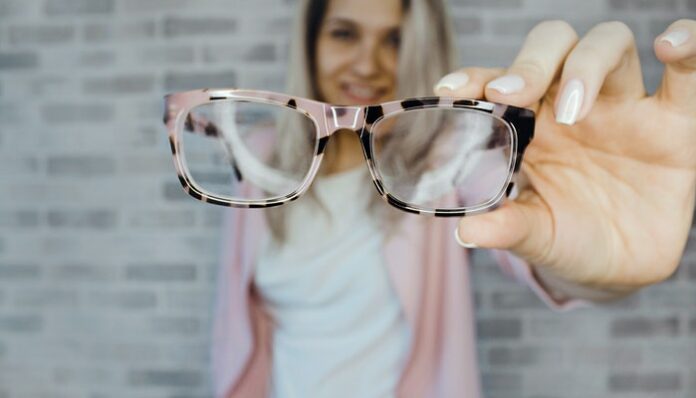
Have you been experiencing blurred vision or severe headaches lately? Do you have diabetes and worry about how that might affect your vision? Vision complaints can occur due to a multitude of reasons. Regular eye exams prevent vision issues from getting worse due to neglect. But how do you decide whether you need to see an optician, optometrist, orthoptist, ophthalmic practitioner or ophthalmologist? Whew!
Simply put, a dispensing optician is someone who fits glasses and contact lenses, working from the prescriptions written by an ophthalmologist or ophthalmic practitioner. An optometrist, in addition to the above, is trained to recognise abnormalities in your eyes, while orthoptists specialise in squints and eye movement disorders. Ophthalmic practitioners are doctors specialising in eyecare, but they are not qualified to perform eye surgery. Ophthalmologists, on the other hand, are eye surgeons that specialise in the medical and surgical care of the eyes. They can both prescribe medicines as well as perform eye surgery. They also specialise in the prevention of eye disease and injury.
Here are some of the common vision challenges — and their symptoms, diagnosis, and treatment — that an ophthalmologist can help you with.
Glaucoma
Glaucoma includes a number of eye conditions in which a build-up of fluid in the front of the eye leads to increased eye pressure, thereby damaging the optic nerve. Symptoms include severe eye pain, blurred vision and tenderness around your eyes.
If you want to rule out glaucoma as a possible cause of your vision challenges, then it’s a good idea to proactively book an ophthalmology appointment with a reputable eye clinic such as the Circle Health Group — the UK’s largest national network of private hospitals, named Private Hospital Group of the Year for 2021. The cause of your vision issues could be as simple as a new eyeglass prescription, or it might mean further testing. In either case, a long wait isn’t usually recommended. So, it makes sense to book an eye check-up from one of their many clinics around the country.
The ophthalmologist can use three types of eye tests to diagnose glaucoma — an ophthalmoscopy that involves simply checking the appearance of the optic disc by pointing an ophthalmoscope, a specialised ‘torch’, close to the eyes; a visual field assessment in which your field of vision can be tested through small points of light to look for blind spots; and tonometry, which checks the eye pressure. Treatment entails glaucoma surgery, which can prevent further damage to your vision.
Diabetes-related Vision Challenges
In the UK, diabetes-associated vision problems are among the leading causes for the complete loss of vision. Diabetes can affect your vision in various ways. Diabetic retinopathy involves damage to the tiny blood vessels in the retina due to high blood sugar levels. Other diabetes-related vision challenges can include susceptibility to the development of cataracts. Diabetic retinopathy symptoms include dark, string floaters and blurred vision.
Diagnosis involves checking the appearance of the retina with an ophthalmoscope or a Volk lens held in front of your eye. Your ophthalmologist will also ask you to visit for regular follow-ups, since diabetes is an ongoing condition. Treatment includes eye injections and laser treatment, as well as eye surgery to remove scar tissue.
Cataracts
Cataracts are when the lens in your eye develops cloudy patches that grow bigger in time, causing your vision to blur and eventually leading to complete vision loss. Symptoms of cataracts include cloudy or double vision, lights that seem too bright, faded colours, and poor night vision. Doctors can test for cataracts using a number of eye tests including a visual acuity test, ocular alignment and motility exam, pupillary function exam and eye-test via an ophthalmoscope. Treatment involves cataract removal and replacing the cloudy, natural lens in your eye with a new, artificial lens.
Myopia
Myopia or short-sightedness is when your ability to see objects at a distance is affected, while hyperopia or long-sightedness impacts your ability to view objects closer to you. Testing usually involves an eye test with different lenses. Myopia or hyperopia treatment can involve surgery or laser treatment.
Age-related Macular Degeneration
Age-related macular degeneration (AMD) may be dry or wet. Dry AMD occurs when there’s a gradual deterioration of the macula part of your retina. This can cause loss of central vision, but rarely leads to complete blindness. Wet AMD, on the other hand, can be a bit more serious and occurs when new blood vessels begin growing behind the damaged macula. Testing usually includes a scan of the back of your eyes, examining the macula and testing your central vision. Treatment includes drugs being injected into the eye to prevent or slow down the growth of the new blood vessels in wet AMD.
It’s important to take vision challenges seriously, no matter how mild your symptoms might seem. However, you also need to keep in mind that often, blurry vision and other eye symptoms can simply mean you need glasses, not that you necessarily have a serious eye condition. It’s best to visit a reputable ophthalmology practice and speak with your ophthalmologist. A timely eye check-up ensures you can continue doing all your favourite things like reading, sewing, or simply stepping out, completely carefree!
Photo by Designecologist via Pexels


















